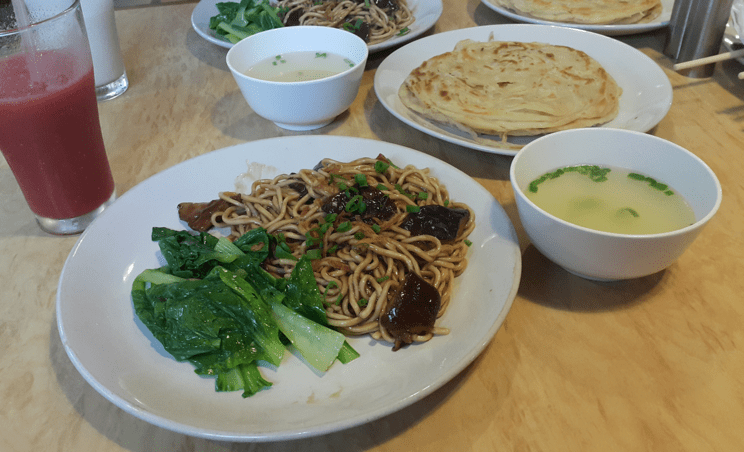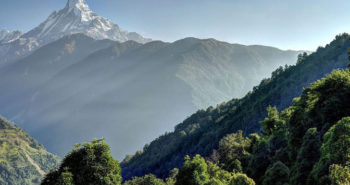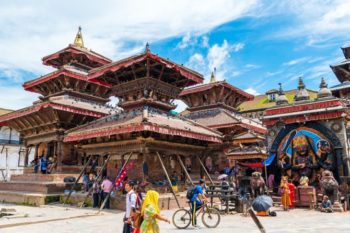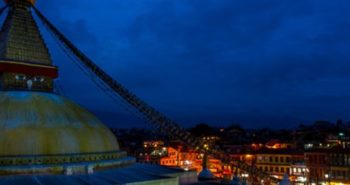How Much Does it Cost to Trek Everest Base Camp?
Trekking to the Everest Base Camp is very affordable! In fact, trekking in Nepal is much cheaper than trekking in other nations. But the total cost of your trek depends on many things:
How many days do you wish to elongate your trek?
- Which season are you planning to trek?- Peak season is quite expensive than the offseason.
- What type of trek are you planning?- All-inclusive, independent, or guide only.
- Which route do you wish to cover?- The classic Jiri route is quite cheaper than the Lukla route.
In this article, we will try to prepare a general outline of
Cost of guides and porters
You will meet enough guides and porters to assist you on the treks. Most of them speak decent English; you will have no problem communicating with them. Also, they arrange lodges and meals in advance, so you need not panic after tiring walks.
Guide- Porter’s price varies according to the season. Also, their price is quite similar if they have a license or associate with the company. They usually charge $30 – $40. But if you choose local guides and porters, they will charge as per their interest. They typically charge $25 -$30 per day.
While in peak seasons, local porters may even charge more than you expected on some challenging trails. So it’s better to carry an extra penny in case of emergencies.
Costs of Permits
To trek in the Everest region, you must collect two permits. You need a Local Area Permit and a Sagarmatha National Park Permit.
The Sagarmatha National Park permit costs $33(Nrs 3,390). Also, with this permit, you get to enter the Khumbu region.
While the price of a TIMS card varies according to its type:
Organized TIMS card: $10
Individual TIMS card: $20
SAARC country TIMS card: $3
Note: You don’t need a TIMS card for trekking in Everest Region. You can buy a local permit for $20 in Everest Region.
Round-trip flights from Kathmandu to Lukla
Lukla- a 45 minutes flight from Kathmandu is the gateway to the Everest region trek. The flights run every morning scheduled from 6:00 am and 11:00 am. The cost of this flight is around US $177. This price is the same all year round. It does not change in peak seasons.
Travel insurance costs
The Himalayas in Nepal is quite rugged and adventurous. But risky at the same time. The weather, climate, and wind in high mountains cause many difficulties while walking, especially for those who do not have prior trekking experience.
You never know what befalls you while trekking in the mountains. So travel insurance is a must for trekking in Nepal. Insurance costs vary with companies and depend on the coverage you need—the activities you will involve in and your health status at the time of the policy.
On average, a 30-day insurance policy costs around $150. It covers all the emergencies and requirements up to the height of 6,000 meters.
Trekking equipment
Setting off for trekking is not a random decision you make. It requires proper planning and appropriate trekking gear too. You need to be extra careful before you pack the necessaries.
The cost of trekking equipment varies according to your preferences and how much of it you already have. It also depends on whether you buy new backpacks or hire for a specified time.
The basic things you need for trekking in the Everest region include sleeping bags, and thermal clothing. Also, waterproof hiking boots, camp shoes, trekking poles, waterproof clothes, gloves, and sunglasses. Buying all this equipment costs around US $2,000 if you buy it firsthand.
If you already own some, then the costs reduce depending on the things you buy.
Costs for food and accommodations

As the Everest region is the most commonly trekked place, there are adequate hotels, lodges, and tea houses for the easy stay of travelers. Most of the lodges and tea houses offer typical Nepali dishes. It includes- Dal, Bhat, Curry, and Pickle.
But in standard hotels, you will get a variety of cuisines. But in higher altitudes, you should be very careful in choosing what you eat. And you must carry water purifiers for your health reasons.
The costs of accommodations and food vary according to places and the season of the trek. The lodges in lower elevations are quite cheaper than in higher lodges. On average, you can get reasonable accommodations and lodges for around US $25- US $30 per day.
If you want to spend extra, you can spend as much up to Namche Bazar. While in higher altitudes, you do not get to spend except for food and lodges.
And in peak seasons you may often run out of rooms and may need to share rooms. But, during off-seasons, the lodges are quite empty, and you can demand extra blankets for the nights too.
Costs for independent trekkers
If you go on independent treks, then it is the cheapest method. For this trek, you do not have to spend on guides, guides-porters. You spend only on accommodation, meals, drinks, permits, and flights.
Also, you can reduce the flight cost if you walk the classic trek- trek from Jiri to Everest.
As per your budget, this is an effective way to trek as you can walk free and reduce your travel cost. But it is better to travel in groups or with travel guides for security reasons.
Other miscellaneous costs
Charging electronic devices
Across the trek route, you need to pay around $2-$5 to charge your electronic devices. While in remote places, the price may vary.
Also, in the off-season, when there is less inflow of tourists, you may get to charge your gadgets for free. But, in peak seasons, they may take charges per hour to charge your devices.
Gratitude for guides and porters
At the end of the trek, many tourists show gratitude to their guides and porters by giving little tips. It’s up to you how much you want to give them—no fixed rates or charges.
Donations
While on your visits to shrines and monasteries, you can donate some amount as per your wish. Also, there are different schools in the region where travelers contribute to help with the maintenance of the place.
General Tips
- You may not find ATMs high in the mountains. So it’s better to carry extra cash, both dollars, and Nepali rupees, to avoid cash problems.
- Chocolate bars and potato chips in higher altitudes are very expensive. It’s better to carry those basics with you from Kathmandu. They are cheap in Kathmandu.
- Carry some general medicines in case of altitude sickness. Also, if you feel difficulty walking in height, walk slowly. And rest more.
Cost for the Helicopter
If you don’t want to return all the way to Lukla from the Base Camp, you can choose the helicopter option, which costs $3800(Gorakshep to Kathmandu). You can get in touch with us for the Everest helicopter tour
Conclusion
Trekking in the Everest region is quite easy and affordable. Enough trekking infrastructures built in the trail route ease trekking in the area.
In this article, we presented a general overview of the budget for the EBC trek. This detail matches if you choose local accommodations and meals. But if you choose to stay in Deluxe hotels, and enjoy delicacies, then your expense will increase.


